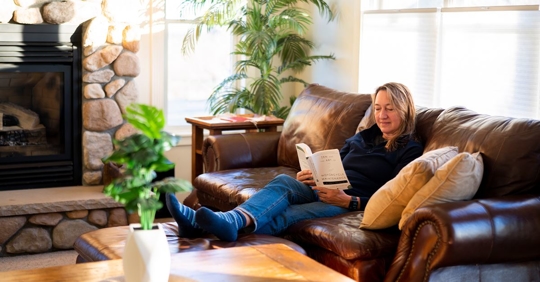We know a thing or two about humidity in North Carolina. And it’s not a secret that high humidity can be uncomfortable. There are issues with low humidity as well. Keeping your home at the best humidity level not only makes it more comfortable but can also impact your family’s health.
Signs Your Indoor Humidity is Too High or Too Low
It’s a rare home that automatically has the perfect humidity level (which is a range of 30% to 50% humidity). Typically, homes tend to be too humid during warm weather and not humid enough during cold weather (but this can also vary depending on the activities in your home – such as cooking.)
- Signs of too much humidity include condensation forming on windows, walls, and ceilings. Mold, mildew, and mildewy odors are also signs that it’s too damp in your house. In addition, high humidity is just uncomfortable, giving everything that “sticky,” unpleasant feeling.
- Too little humidity, on the other hand, increases static electricity, contributes to dry skin, and can even exacerbate certain health issues such as asthma and allergies. Nosebleeds can also become more frequent.
Related Content: 4 Simple Ways to Save Money on Your Winter Heating Bills
What Is the Best Indoor Humidity Level in Winter?
As mentioned above, the ideal indoor humidity level is between 30% and 50%. Winter can be challenging since cold air naturally has less moisture in it. Plus, dry air tends to feel colder, which often spurs homeowners to turn the heat up… which dries the air out even more.
If you can get your home’s indoor humidity level to at least 30% during the dry winter months, your home will be a lot more comfortable. Using a humidifier will help, but there are other small ways to add humidity to your home as well. If you love houseplants, bring plenty of them into your space – they’ll increase the humidity level, especially if they’re clustered together in certain areas. Make use of decorative tabletop fountains, which add both soothing sounds and humidity to your space. And, start enjoying tea more often – boiling water on your stove can also increase the humidity level in the immediate area.
What Is the Best Indoor Humidity Level in Summer?
Summer in North Carolina is definitely not a low-humidity experience! Instead, we often have the problem of too much humidity in our homes. During the summer, if you can get your home’s humidity level down to 50% or lower, your home will feel much more comfortable.
A whole-home dehumidifier is a solid solution, along with turning on the air conditioner and making use of ventilation and exhaust fans. Running ceiling fans can also help warm rooms feel a bit more comfortable.

